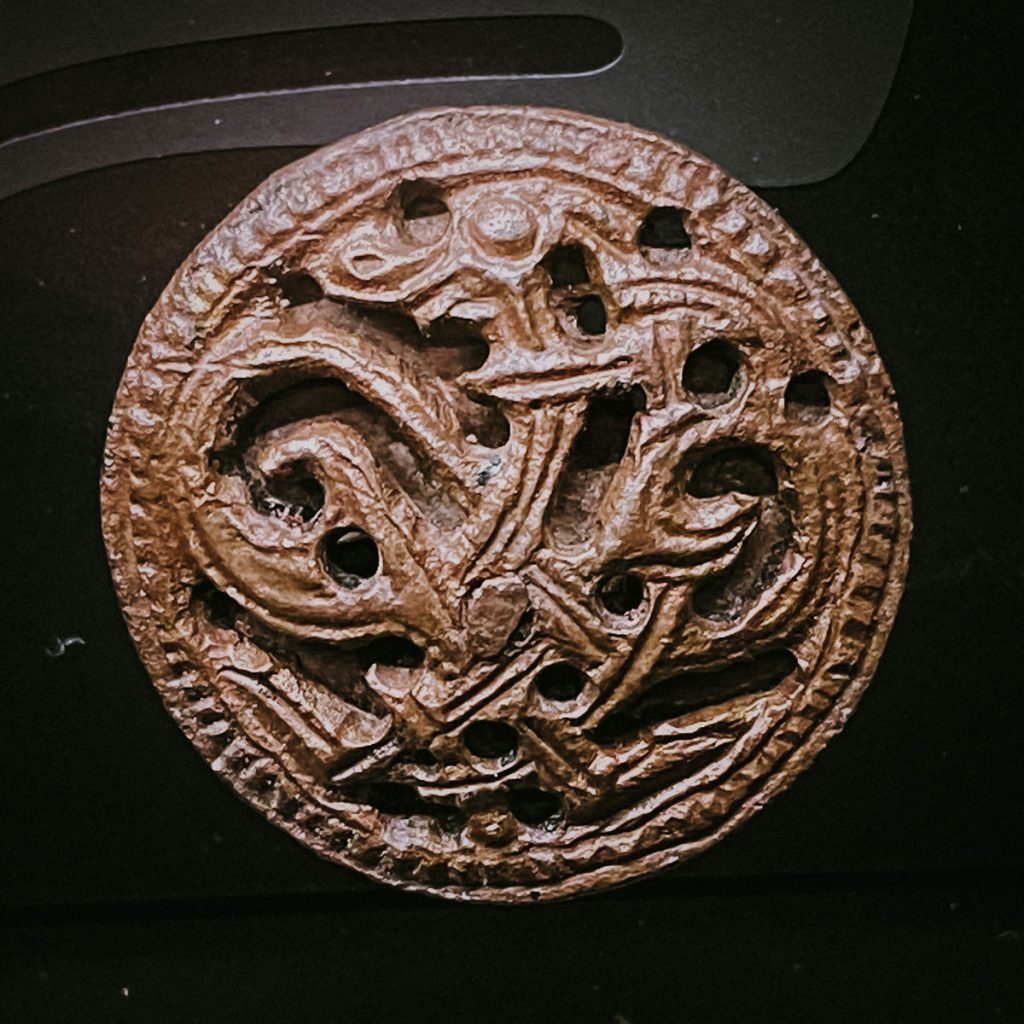
Broa Style (790-850 A.D.)
This is the earliest style of the Viking period. It is named after a grave find in Broa on Gotland, which is a Swedish island in the Baltic Sea. This is the style that was current in the actual days of Ragnar „Lothbrok“. That is the so-called Vendel period in the Nordic countries,which was the in-between period where not much was happening politically, and is defined between the more dramatic Migration and Viking periods. Some historians don‘t seem to see it as a Viking age style. Maybe that is because it formed before the Viking age itself? They just mention the Oseberg style in the beginning, or are designated as Oseberg/Broa. Artefacts that depict the Broa style are from the beginning of the Viking age at 793 A.D. and are known until around 850 A.D. The Broa style consists mostly of forms that depict animals, as is most common in Viking art styles. The animal forms swirl, sway and interlock across the surface that is decorated. There is a great freedom in abstract forms, and often astounding beauty, which is very distinct and unlike what other European cultures were creating in this time.
Image: Ancientskin.de
Text-Quelle: wikipedia.org/wiki/Viking_art







